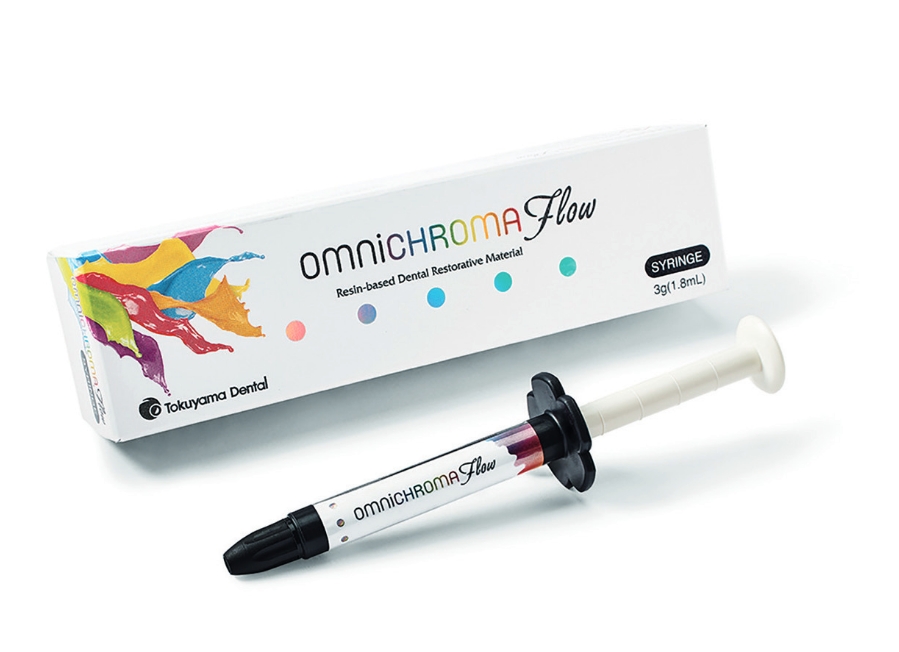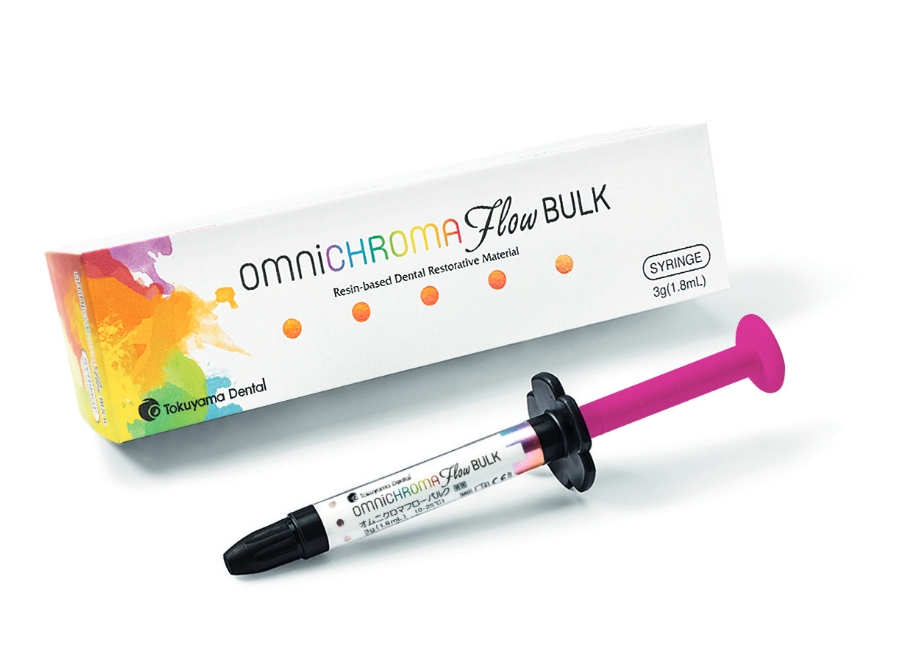

The real revolution in direct conservative dentistry
Thanks to its Smart Chromatic Technology, it exploits structural color as the main chromatic mechanism and does not require added dyes or pigments.
The fillers themselves generate the color, reflecting the color of
the adjacent tooth. Filling materials must meet stringent requirements
in order to exhibit structural color.
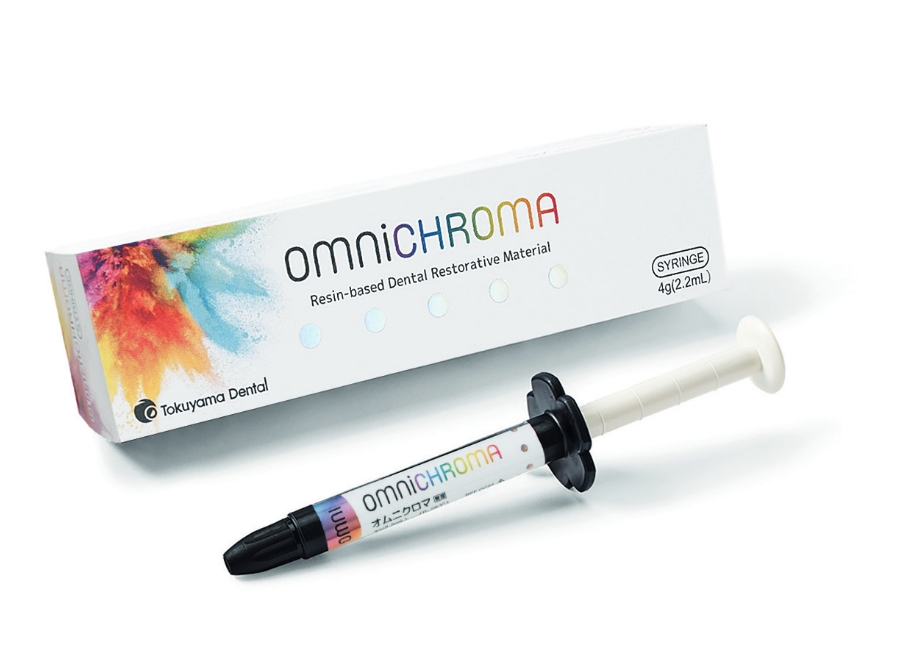

Only one choice for every shade

• color-taking evaluation• tint, chroma and value• layering with different masses: dentine, body or enamel• materials reordering• long chair times

Uniform sized supra-nano spherical filler (260nm SiO2-ZrO2)
Spherical shaped pre-polymerized filler of variable diameter
(Includes 260nm SiO2-ZrO2 spherical filler)

Monomers
UDMA/TEGDMA

Filler percentages
79wt% (68 vol%)
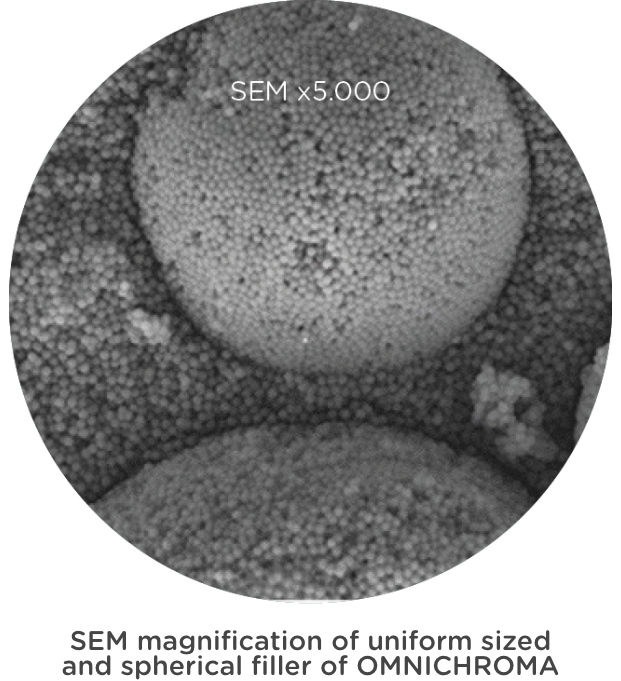
Polymerization depth
A standard, non- retentive class II cavity was made in a molar. The cavity was then lubricated with petroleum jelly, filled with each composite, light-cured, removed, placed in epoxy, and sectioned through the core. The Knoop hardness was then determined in 1 mm increments for each composite.
OMNICHROMA achieved the maximum polymerization depth
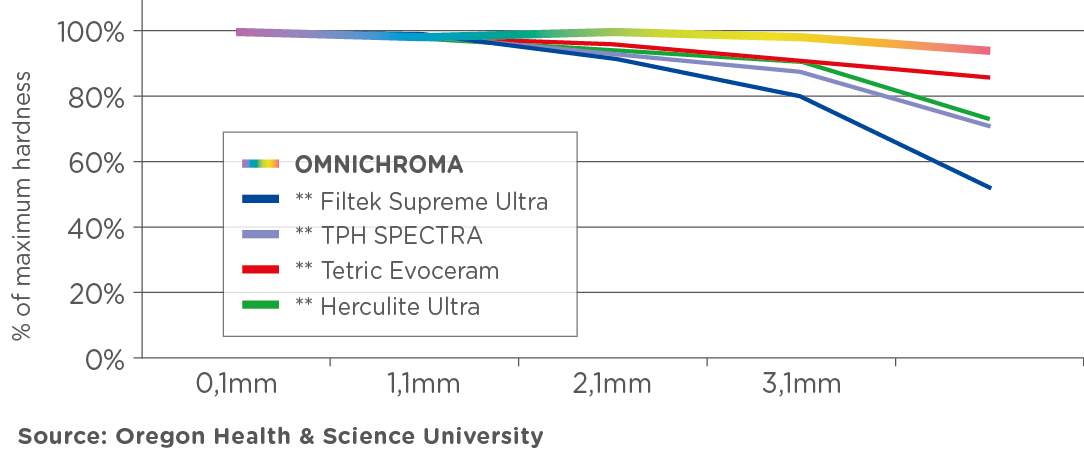
Compressive strength
Samples were made in glass tubes and stored in water at 37°C for 24 hours. They were then tested with a universal testing machine with a crosshead speed of 1mm/min with a 500kg load cell.
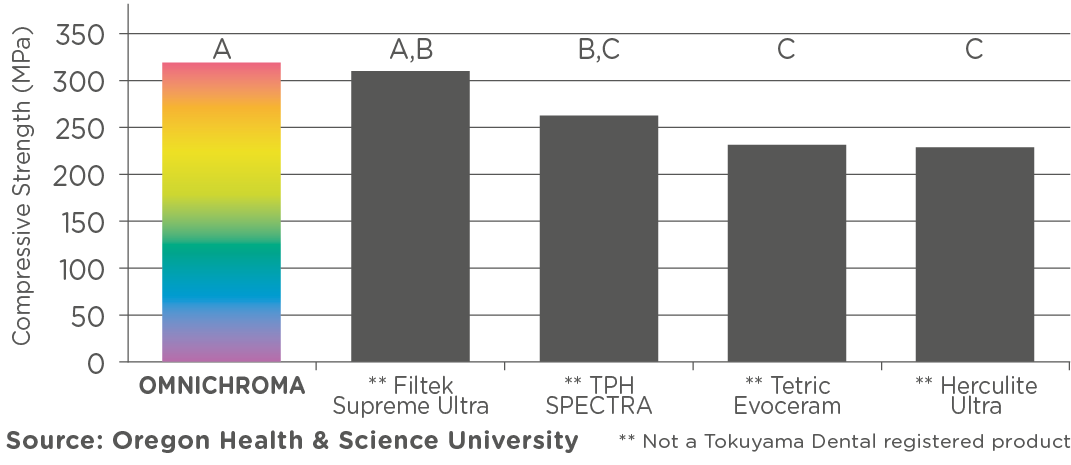

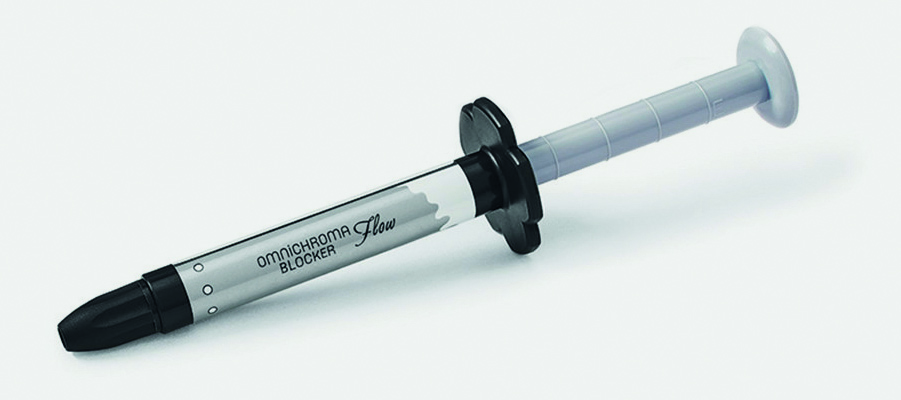
Indicated to block the passage of light
and make the anatomical profile of the cavity invisible.

